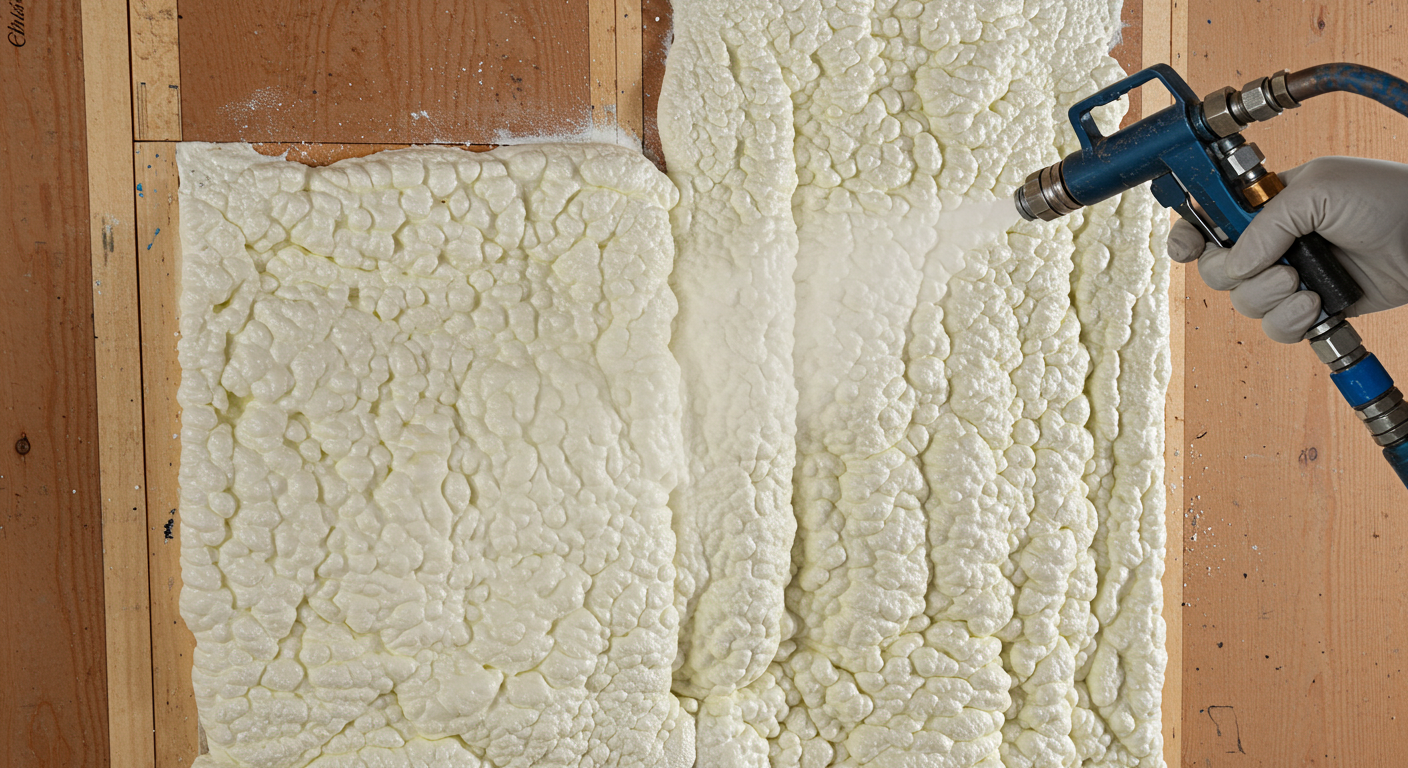Many Martin County homeowners are understandably cautious about spray foam insulation. It’s a product made through a chemical process—so naturally, people worry about off-gassing, toxicity, and indoor air quality. But here’s the truth: when properly installed by professionals, spray foam insulation is not only safe but can improve your home’s energy efficiency and comfort for years to come.
Let’s walk through the science, safety practices, and facts you need to feel confident in your decision.
What Makes Homeowners Question Spray Foam Safety?
It all starts with common concerns:
- Isn’t spray foam made with chemicals?
- Can it harm my indoor air quality?
- What about fire safety or long-term exposure?
These are valid questions—and the answers depend on how the foam is installed, who installs it, and what type of spray foam is used. Poor installation can cause problems, but with certified professionals and trusted materials, spray foam insulation is widely considered a safe, high-performance option.
Understanding the Chemicals in Spray Foam Insulation
Spray foam insulation is formed by mixing two main components on-site: isocyanates and polyol resin. When combined, they react and expand to form rigid or flexible foam. This reaction produces heat and can emit volatile organic compounds (VOCs) during curing.
VOCs: What They Are and Why Curing Matters
VOCs are chemicals that can evaporate into the air during the curing process. However, VOC levels drop significantly once the foam is fully cured—usually within 24 to 48 hours.
According to the EPA, properly installed and cured spray foam emits no harmful levels of VOCs indoors. That’s why Foam Worx Insulation always ensures proper ventilation and curing before you reenter your home.
Open-Cell vs. Closed-Cell: Which Is Safer for Homes?
Both types of spray foam are safe when installed correctly, but they behave differently.
| Type | Safety Highlights | Best Use |
| Open-Cell | Softer, breathable, lower density. Cures quickly. | Attics, soundproofing |
| Closed-Cell | Denser, moisture-resistant, higher R-value. | Basements, exterior walls |
Both options are code-compliant and safe—but we help homeowners choose the best type for their space and concerns.
Is Off-Gassing a Problem with Spray Foam?
Off-gassing primarily occurs during the curing phase. After that, it’s minimal to non-existent.
- Foam Worx Policy: We recommend a 24–48 hour reentry delay after installation to allow for full curing.
- Ventilation is key: We set up proper airflow during and after installation to speed up the off-gassing process safely.
Spray Foam & Indoor Air Quality: What the Science Says
Spray foam creates an airtight seal, reducing the infiltration of allergens, dust, and pollutants. Once cured, it helps maintain healthier air by:
- Blocking outdoor pollutants
- Reducing mold risk by controlling moisture
- Improving HVAC efficiency and air circulation
When installed professionally, spray foam can actually improve indoor air quality—especially in older or drafty homes.
Fire Safety & Spray Foam: What You Need to Know
Not all spray foams are created equal when it comes to fire safety.
- Closed-cell spray foam has a Class 1 fire rating, meaning it resists flames and slows their spread.
- Additional thermal barriers, like drywall, are required over foam to meet fire codes.
Foam Worx Insulation uses fire-rated formulations and follows all local and national fire code standards.
Professional Installation = Safe Installation
Safety depends more on the spray foam insulation contractor than the product itself. Here’s what we do at Foam Worx Insulation:
- Follow manufacturer mix ratios exactly
- Use high-grade, third-party tested foam
- Ventilate thoroughly
- Respect all curing timeframes
- Keep homeowners informed every step of the way
Real Safety Standards: What We Follow at Foam Worx Insulation
| Concern | Is It Safe? | What Foam Worx Does |
| VOC Exposure | Yes, post-curing | Ventilates and uses low-VOC foam |
| Fire Resistance | Yes, with Class 1 rating | Installs flame-retardant formulas |
| Off-Gassing | Minimal after 24 hours | Enforces 24–48hr reentry policy |
| Air Quality Impact | Positive after curing | Seals air leaks, improves IAQ |
Common Myths About Spray Foam Toxicity
Myth 1: Spray foam always makes your air toxic
Truth: Proper curing and ventilation eliminate this concern entirely.
Myth 2: Foam insulation is flammable
Truth: We use Class 1 fire-rated foam and cover it with fire barriers like drywall.
Myth 3: People with asthma should avoid it
Truth: Once cured, spray foam may actually help people with asthma by reducing allergens.
Certifications That Prove Spray Foam Safety
Spray foam products used by Foam Worx are certified under:
- Greenguard Gold for low chemical emissions
- SPFA Professional Certification Program
- EPA and OSHA compliance for safe application
3 Essential Safety Tips for Homeowners
- Always ask your installer about curing time policies—never reenter too early.
- Ensure your contractor ventilates during and after the job to avoid VOC buildup.
- Only hire certified installers who use third-party tested materials.
Want Spray Foam Insulation That’s Safe and Reliable?
When installed professionally, spray foam is a safe, efficient solution that seals your home and protects your family. Foam Worx Insulation follows all EPA and OSHA safety guidelines, uses certified low-VOC products, and ensures complete curing before reentry. If you’ve been on the fence, now’s the time to move forward—safely.
Contact Foam Worx Insulation
📞 (507) 407-0678
📧 [email protected]
FAQs
Is spray foam insulation toxic?
Not after curing. VOCs are released during installation, but proper ventilation and wait times ensure safety.
How long should I stay out of my home after installation?
We recommend 24 to 48 hours, depending on the foam type and space.
What’s the difference between open-cell and closed-cell for safety?
Both are safe; closed-cell has higher fire resistance and moisture protection.
Can spray foam affect my indoor air quality?
Yes—in a positive way. Once cured, it seals out pollutants and allergens.
Is spray foam safe for people with allergies or asthma?
Yes, when fully cured. It helps reduce dust and outdoor irritants.
Are there any fire risks with spray foam?
When installed correctly with proper barriers, spray foam meets fire safety codes.
What happens if spray foam isn’t mixed correctly?
It may not cure properly, which can lead to lingering odors or poor performance. That’s why professional installation matters.
How does Foam Worx ensure my family’s safety?
We use certified products, follow curing protocols, ventilate your space, and inspect every job for compliance.




